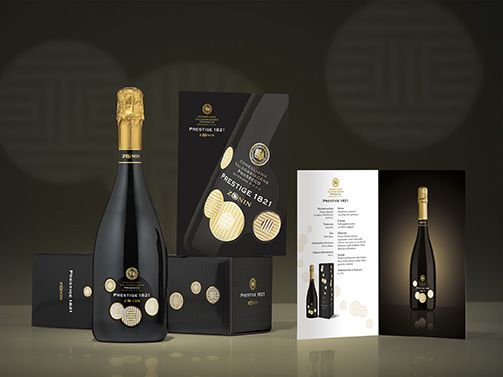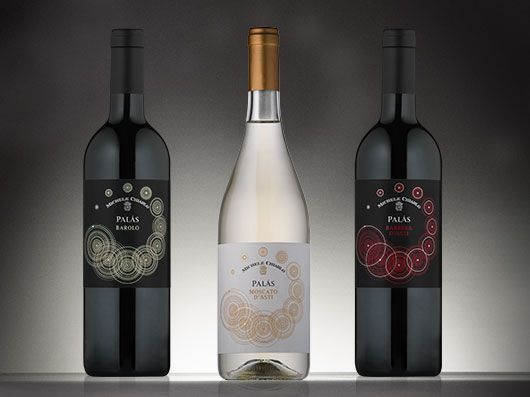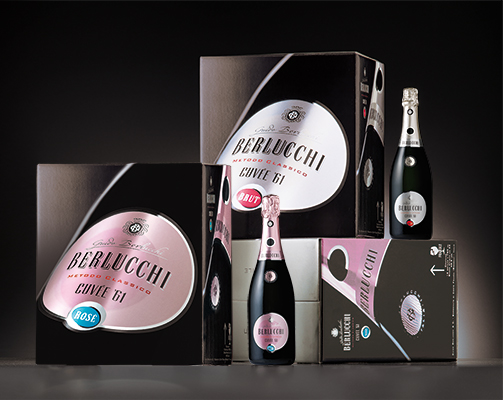Building a team spirit to achieve new markets: interview with Gianni Legnani
Building a team spirit to achieve new markets: interview with Gianni Legnani from SGA Wine design on Vimeo.
Gianni Legnani (Milan, 1936) began his career at Nestlé (Milan) and went on to work at their head offices in Vevey (Switzerland); he later worked with Locatelli, Gillette Italia and then acquired a partnership in Design Group Italia.
General Manager and then Managing Director of Hill & Knowlton Italia, the P.R. Agency of J. Walter Thompson he later became International Vice-President of Burson-Marsteller Italia, the prominent Communications and Public Relations Company of Young & Rubicam.
Legnani founded the Champagne Information Centre in Italy and has been directing it for 16 years on behalf of the Comité Interprofessionnel du Vin de Champagne (CIVC). Under his direction, the Centre has managed to settle very sensitive issues such as the “Wine war” between France and Italy, which ended in the “peace of Florence”, and the discrimination against Champagne, charged with a VAT of 38% while for Italian sparkling wines VAT was of only 18% This inequity was corrected so that the same rate of 18% was applied to both, thanks to a verdict issued by the European Court of Justice.
After having headed the Cognac Information Centre in Italy for 12 years on behalf of the Bureau National Interprofessionnel du Cognac (BNIC), he became the communication consultant for the Consorzio Tutela Vini dell’Oltrepo Pavese and subsequently he has been in charge of communication and image of Guido Berlucchi.
Gianni Legnani teaches lessons on sparkling wine production, on distillation and on special wines in the A.I.S. (Italian Association of Sommeliers) first level courses for sommeliers and for other organisations in the wine world. He contributed to The World of the Sommelier manual, “Il mondo del Sommelier”, the official course book used by the A.I.S., and regularly collaborates with trade wine and gastronomy publications.
He currently teaches a course on Oenology (grapes, wine making and distillation) at the Università per Tutte le Età, fostered by the Lions Club of Brugherio, within the range of their social and cultural activities.
Based on your experience, how would you say communication has evolved in the wine sector?
Over the past 20 years, the average quality of Italian wines has improved, and considering the progresses we are still making in oenology, I’m sure that in another 20 years our wines will be even better than they are today. On the other hand, wine consumption is constantly decreasing. When people tell me “we drink less but we drink better”, I’d actually like to hear “we drink better and we drink more”. The negative trend is in part due to Italian wine producers’ communication and marketing strategy over the past years: we’ve never been able act as a team. Wine marketing has always been bound to individual producers, each one with its own message, and this scattered approach has prevented the creation of a critical mass that could give the boost that Italian wine needs on the global market. The real improvement in the quality of Italian product has not been properly communicated to the consumer in terms of image, and today we’re paying the price for this lack of communication.

Packaging Prestige designed for Casa Vinicola Zonin, distributed in many countries.
Wine is distinguishing itself more and more from the other goods categories: we see this in the supermarkets, where more attention is given to the information provided about the product and special departments have been dedicated to wines alone. In relation to the specific properties that distinguish wines, what criteria should the marketing be based on?
In the past, wine was consumed in almost every household. Children were given a “positive introduction to wine” within the family, as parents added a drop of wine to their water which changed colour and taste: so they were feeling “grown-up”! We’re losing this early introduction: today young people aren’t really shown that wine consumption is part of our heritage, and, left alone, discover alcohol in their teens, often binge drinking without any basic culture.
After my experience abroad, I can safely say that wine culture in countries like France, Switzerland and England is superior to that in Italy. In particular, wine experts tend to focus more on quality, while in our country we see more of a sporadic interest in the matter. If I invite Italian friends over, even if they’re highly educated or wealthy managers, I never hear them say “Let’s open a bottle of Château Lafitte”. Instead they ask “look I’ve found this homemade wine, I paid one euro a litre for it, you’re a wine expert, what do you think of it?”
In our industry, the marketing should overcome these cultural and social barriers, communicating the positive aspects of quality wine, which is the coveted result of the ability and expertise of oenologists and producers. Wine is not simply a drink; it has symbolic connotations, emotional aspects, specific tastes and scents. Everything good about a wine, all the aspects of life it contains, should be conveyed by the marketing, which shouldn’t just talk about production and variety.
I find that we Italians have played an important role in the history of wine. We should be able to capitalise on our traditions, to stand out not only in Italy, but also abroad. The French have done this better: they have managed to sell their wines around the world, making Bordeaux, for example, an archetype. Then if we think of Champagne; a third of production is exported. If a third of Italian production was exported, our entire industry would be completely revolutionised. But to achieve this we need to reach that critical mass that allows for real communication.

Michele Chiarlo: new packaging Palas’ line dedicated to foreign markets
Over the last few years in Italy we have seen a decrease in wine consumption. Yet this phenomenon corresponds to an increase in the attention we pay to the quality; how has the consumers’ perception changed?
In the past, wine was considered a staple part of a standard diet and was drunk in larger quantities as a source of energy. Today we ask something of wines we didn’t ask in the past: the pleasure of tasting it.
Organisations like the A.I.S. and Onav regularly offer courses to promote wine culture. Some courses I teach have been attended by up to 100 people, willing to invest time and money to eagerly follow the presentation of wine tasting.
Presenting the DOCG wines of Piedmont and the wines of Lombardy to an audience of Chinese wine dealers at the Interwine event in Canton in June 2013, I noticed the same interest. And everybody, at the end of the tasting sessions, tells me: “we now drink differently”. I realise that the spreading of wine culture is a long and expensive process, but it is essential for the expectations of today’s consumers, who want to know what they’re drinking and take pleasure in tasting and sharing great wines, rather than be happy with saving a few euros.
Let’s talk about sparkling wines: the Classic Method produces a category of wines that are unique by their particularity: what elements and differences characterize the marketing of these products in relation to other wines?
Sparkling wine, in Italy, is essentially perceived as a wine for special occasions. On one hand, this is positive, as it endorses the emotional aspects of the wines, yet on the other hand it detracts from the value of the wine for what it is. This doesn’t happen in France with Champagne, which is both consumed during special occasions or to match good food.
The typically Italian behaviour of associating sparkling wine with festivities, celebrations, toasts, tends to penalize the possibilities of what in my opinion remains one of the gems of Italian oenology. Wine produced by the Classic Method, while safeguarding its celebratory vocation, should be perceived as ideal choice on all occasions for the pleasure of sharing. It’s nice to dine with bubbles!

Guido Berlucchi, ‘61 line: packaging and outercases developed for U.S. market
In relation to the recent expansion of the areas of production all over the world, which means Italian wines now compete with products from the so-called “new world” (Chile, Australia, South Africa and more recently China), what strategies should be adopted to maintain and increase our market share?
First of all by putting internal competition aside: I believe that producers have a common goal. It is useless to fight for a small cake, the slices become smaller and smaller as the number of contenders increases. They should all work together to make the cake bigger, so that the size of the slice is bigger for everybody.
It’s not about outdoing other producers. If suitably educated, the consumer won’t simply slurp down the first wine they find, but will look for the best quality and organoleptic characteristics based on their own expectations and tastes: and this is how we’ll increase consumption, by concentrating on quality.
Of course, emerging regions like those in Chile, Argentina, California or Australia now offer very interesting wines. But it’s also true that markets in which wine is not part of the traditional culture, such as the Far East, are about to enter the market. If we can manage to help those vast markets to learn about quality wine, our tiny cake will suddenly become huge, and everybody will get a larger slice.
Together producers have a common goal: foster a more regular and suitable per person consumption around the world. We Italians are certainly capable of this, we are capable of producing excellent quality products, but with our individualistic mentality we don’t always manage to communicate it with the same effectiveness. Following the example of the great Châteaux of Bordeaux, ambassadors in the world of French wine, and Champagne, ambassador of sparkling wine, instead of fighting our own individual battle, we should fight for “Italian wine” without getting distracted by too many alternatives and possibilities, but focusing on strong varieties that can compete on the world’s market. We favour native vine varieties instead of international varieties, and our traditions: we should privilege our wines, the ones we know how to produce, and we must present them in ways to make them recognisable. And so, led by the great names, which beyond their commercial targets, carry the flags of ambassadors of Italian wines in the world, we will have the strength and ability to compete on the global market.


